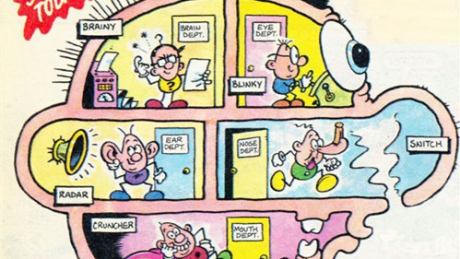Are older people ‘past it’. whatever ‘it’ is?
Is creativity the exclusive playground of youth? Or does creativity mature with age. Although it’s easy to look at the creativity of older people like Margaret Atwood and David Hockney and a host of others, let’s here look at the physiology of the brain and whether older brains are more or less creative.
Snap!
The older brain resembles the creative brain in a couple of ways that make it ideally suited to accomplish work in a number of creative domains. So instead of promoting retirement at age 65, perhaps we as a society should be promoting transition at age 65: transition into a creative field where our growing resource of individuals with older brains can preserve their wisdom in culturally-valued works of art, music, or writing.
Sorry? You were saying?
The older brain is more distractible and somewhat more disinhibited than the younger brain (so is the creative brain). In a recent study, psychologist Lynn Hasher and her group at the University of Toronto found that older participants were more distractible than their younger counterparts.
However, members of this older, distractible group were also better able to use the distracting information to solve problems presented later in the study.
Loving it when a plan comes together
Older brains score better on tests of crystallised IQ (and creative brains use crystallised knowledge to make novel and original associations). Intelligence studies indicate that older individuals have access to an increasing store of knowledge gained over a lifetime of learning and experience.
Combining bits of knowledge into novel and original ideas is what the creative brain is all about. Thus, having access to increased internal warehouse of knowledge provides fertile ground for creative activity in the older brain.
The older brain is also characterised by a broadening focus of attention. Numerous studies suggest that highly creative individuals also employ a broadened rather than focused state of attention. This state of widened attention allows the individual to have disparate bits of information in mind at the same time. Combining remote bits of information is the hallmark of the creative idea.
We really don’t give a toss.
Other studies show that certain areas of the prefrontal cortex involved in self-conscious awareness and emotions are thinner in the older brain. This may correlate with the diminished need to please and impress others – a notable characteristic of both older individuals and creative luminaries.
Both older individuals and creative types are more willing to speak their minds and disregard social expectations than are their younger, more conventional counterparts.
So there are physiological similarities between older brains and creative brains, which some must extrapolate would mean that older creative brains are the most creative brains of all! Not that we’re biased or anything…
References:
Kim, S., Hasher, L., & Zacks, R.T. (2008). Aging and a benefit of distractibility. Psychonomic Bulletin & Review, 14, 301-305.
Horn, J.L. & Cattell, R.B. (1967). Age differences in fluid and crystallised intelligence. Acta Psychologia, 26, 107-129.
Lehman, H.C. (1949). Some examples of creative achievement during later maturity and old age. Journal of Social Psychology, 30, 49-79.
Salat, D.H. et al. (2004). Thinning of the cerebral cortex in ageing. Cerebral Cortex, 14, 721-730.

